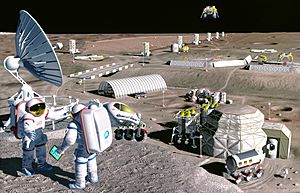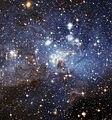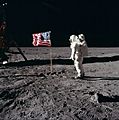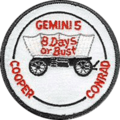Space colonisation facts for kids
Space colonisation is the idea of humans living outside of Earth permanently. At present, there are no space colonies. However, many people have put forward ideas and thought about the first space colony. Some national space programmes see space colonisation as a long-term goal.
Building colonies in space would require access to water, food, space, people, building materials, energy, transportation, communications, life support, simulated gravity, radiation protection and money. Launching things from Earth is expensive, so it is better if the materials come from the place of the colony.
Possible sites for space colonies include the Moon, Mars, asteroids and big, free-floating space stations. Resources, such as solar energy and water, are available from or on the Moon, Mars, near-Earth asteroids or other planetary bodies. People could use them to build the space colony and live there.
Mars is the most Earth-like planet known, so the colonization of Mars may be first. Some celestial bodies might be terraformed. This means changing a body's atmosphere, temperature, surface topography or ecology to be similar to the biosphere of Earth, so that humans can live there.
Images for kids
-
A contour plot of the gravitational potential of the Moon and Earth, showing the five Earth–Moon Lagrange points
-
An artist's conception of a research station in the clouds of Venus.
-
Artist's impression of a hypothetical ocean cryobot in Europa.
-
Ligeia Mare, a sea on Titan (left) compared at scale to Lake Superior on Earth (right).
-
A star forming region in the Large Magellanic Cloud
-
The deploying of the United States flag during the first crewed Moon landing (Apollo 11) on the lunar surface does not constitute a territorial claim, unlike historically practiced on Earth, since the US reinforced the Outer Space Treaty by adhering to it and making no such territorial claim.
-
The logo and name of the Lunar Gateway references the St. Louis Gateway Arch, associating Mars with the American frontier and the manifest destiny mentality of American settler colonialism.
See also
 In Spanish: Colonización del espacio para niños
In Spanish: Colonización del espacio para niños
















